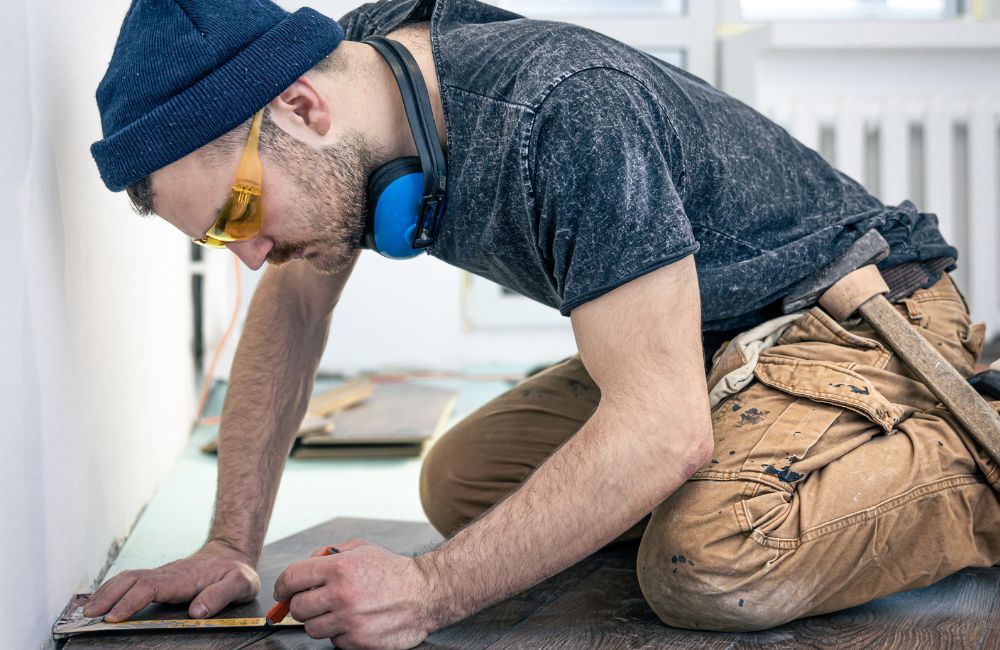October 28, 2025
The Hidden Costs & Efficiency Gains of Upgrading Flooring in Home Service Projects
When it comes to home renovations, flooring is often viewed purely as a design choice. But beneath the surface, upgrading your floors can significantly improve your home’s energy efficiency, reduce maintenance costs, and enhance its long-term value.
Understanding the hidden costs — and savings — of flooring upgrades helps homeowners and contractors make smarter, more durable investments that improve comfort and performance.
Whether you’re planning a single-room update or a whole-home project, this guide explains how flooring upgrades influence energy use, maintenance, and long-term value and how to get the most from your investment.
Why Flooring Upgrades Affect Efficiency and Costs
The type of flooring you choose plays a surprisingly significant role in your home’s energy performance, comfort, and maintenance needs. Here’s why:
- Thermal Insulation: Certain materials, like cork or engineered wood, help regulate indoor temperatures, reducing heating and cooling costs.
- Durability and Longevity: High-quality hardwood or LVP (luxury vinyl plank) lasts longer, minimizing future replacement expenses.
- Maintenance Efficiency: Upgraded floors require less cleaning, refinishing, and repair — saving time and money.
- Moisture Resistance: Modern flooring materials prevent costly water damage and improve indoor air quality.
Flooring becomes part of a more efficient, cost-saving home system when combined with other home service upgrades (like HVAC, insulation, or lighting).
High-Impact Flooring Choices for Efficiency and Savings
Here are some of the most effective flooring upgrades to improve your home’s performance and reduce long-term costs:
1. Engineered Hardwood
Why It’s Worth It: Offers the beauty of solid wood with improved stability and moisture resistance.
Pros: Long lifespan, lower maintenance, and better tolerance for temperature fluctuations.
Best For: Homes in humid climates or with radiant heating systems.
Efficiency Tip: Choose engineered wood with a high-density core for better thermal retention.
2. Luxury Vinyl Plank (LVP)
Why It’s Worth It: Affordable, durable, and highly resistant to water — ideal for kitchens, basements, and high-traffic areas.
Pros: Minimal maintenance, quick installation, and realistic wood or stone visuals.
Best For: Busy households or home service projects that need long-lasting materials without the high cost.
Efficiency Tip: Use underlayment with insulation properties to improve energy retention and soundproofing.
3. Cork Flooring
Why It’s Worth It: Naturally insulating, eco-friendly, and comfortable underfoot.
Pros: Reduces noise, helps regulate temperature, and offers a soft, resilient surface.
Best For: Bedrooms, offices, or any space where comfort and energy efficiency are top priorities.
Efficiency Tip: Opt for sustainably sourced cork with low VOC finishes for better indoor air quality.
4. Tile with Radiant Heating Systems
Why It’s Worth It: Radiant heat under tile improves comfort and efficiency, making it ideal for bathrooms and kitchens.
Pros: Even heat distribution, minimal maintenance, and modern appeal.
Best For: Homeowners combining flooring with electrical or plumbing updates.
Efficiency Tip: Pair radiant flooring with programmable thermostats for optimal energy control.
Planning Flooring Upgrades the Smart Way
- Assess your energy goals: Consider how new flooring can complement insulation, HVAC, and lighting improvements.
- Set a long-term budget: Investing in durable, efficient materials upfront reduces lifetime costs.
- Hire skilled professionals: Proper installation ensures flooring performs as intended — saving money and avoiding repairs later.
- Think whole-home efficiency: Coordinate flooring upgrades with other home services to maximize ROI.
Explore our Home Services page for expert resources on optimizing your next flooring or home improvement project.
FAQ
Q: How can flooring impact my home’s energy bills?
A: Properly insulated and installed flooring can reduce heat loss and improve temperature regulation, lowering utility costs.
Q: Which flooring type offers the best long-term savings?
A: Engineered hardwood and LVP provide strong durability with low maintenance, making them cost-effective over time.
Q: Should I replace my floors before other home service upgrades?
A: Ideally, coordinate projects together — flooring, insulation, and electrical updates work best when planned as one system.
Q: Are eco-friendly flooring options more expensive?
A: While the upfront cost can be slightly higher, materials like cork and bamboo often pay off through energy savings and durability.
Conclusion
Upgrading your flooring isn’t just about style — it’s about improving your home’s efficiency, longevity, and comfort. By choosing high-performance materials and working with skilled professionals, you can reduce hidden costs and enjoy a home that feels better, performs better, and lasts longer.
Contact Us
Ready to upgrade your floors with a more innovative, more efficient solution?
The team at Mr. Hardwood specializes in high-quality flooring and full-service home improvement projects designed to add beauty and value. Contact us today to learn more.

